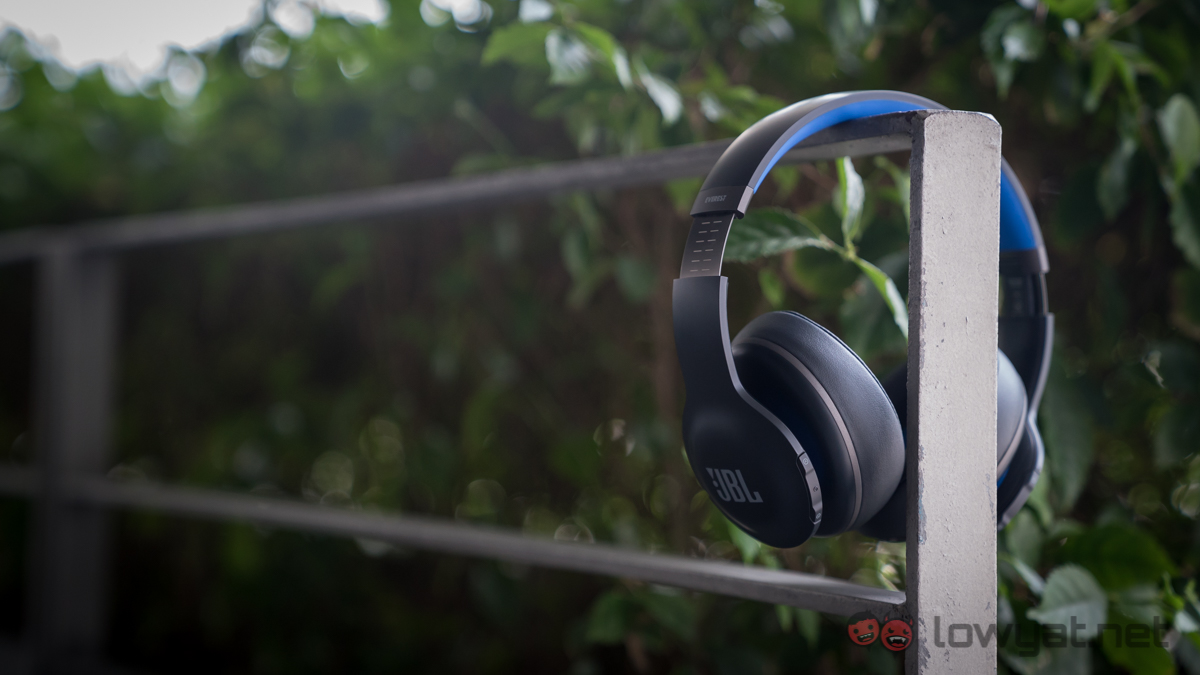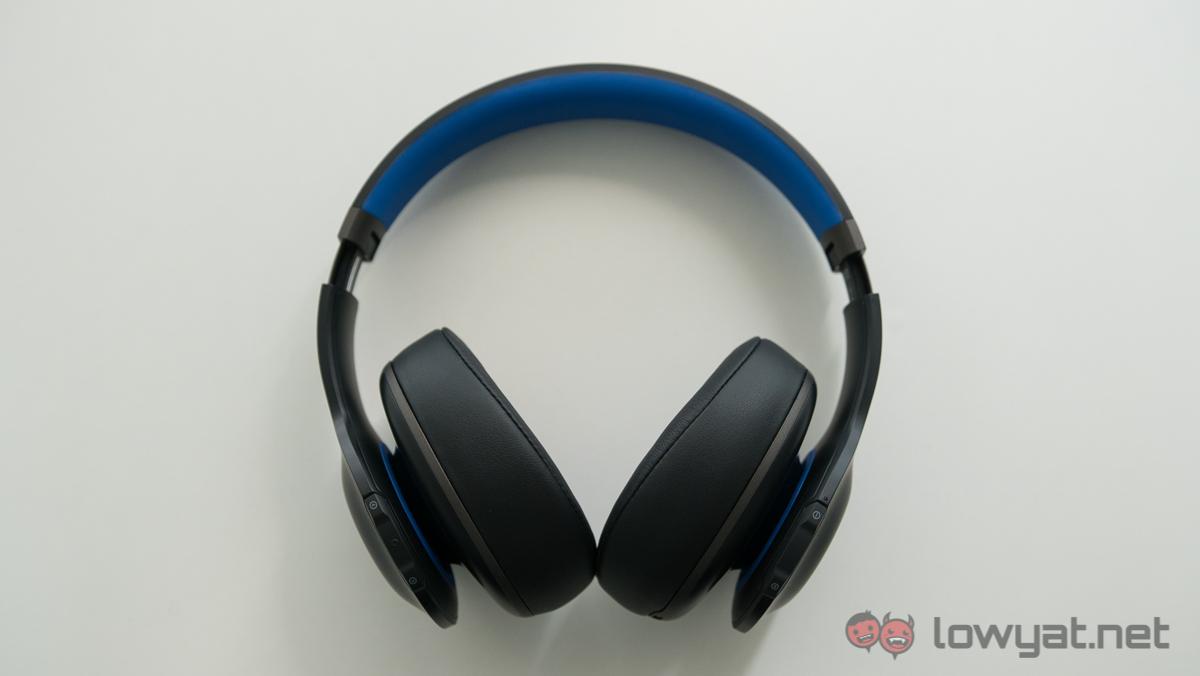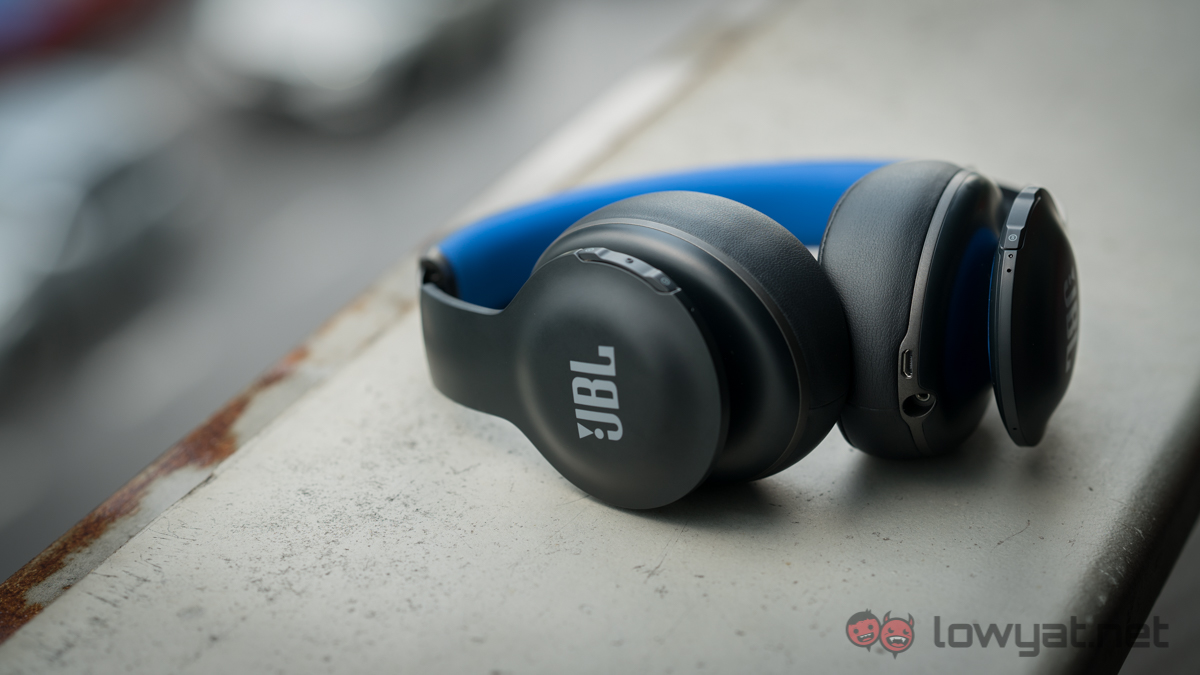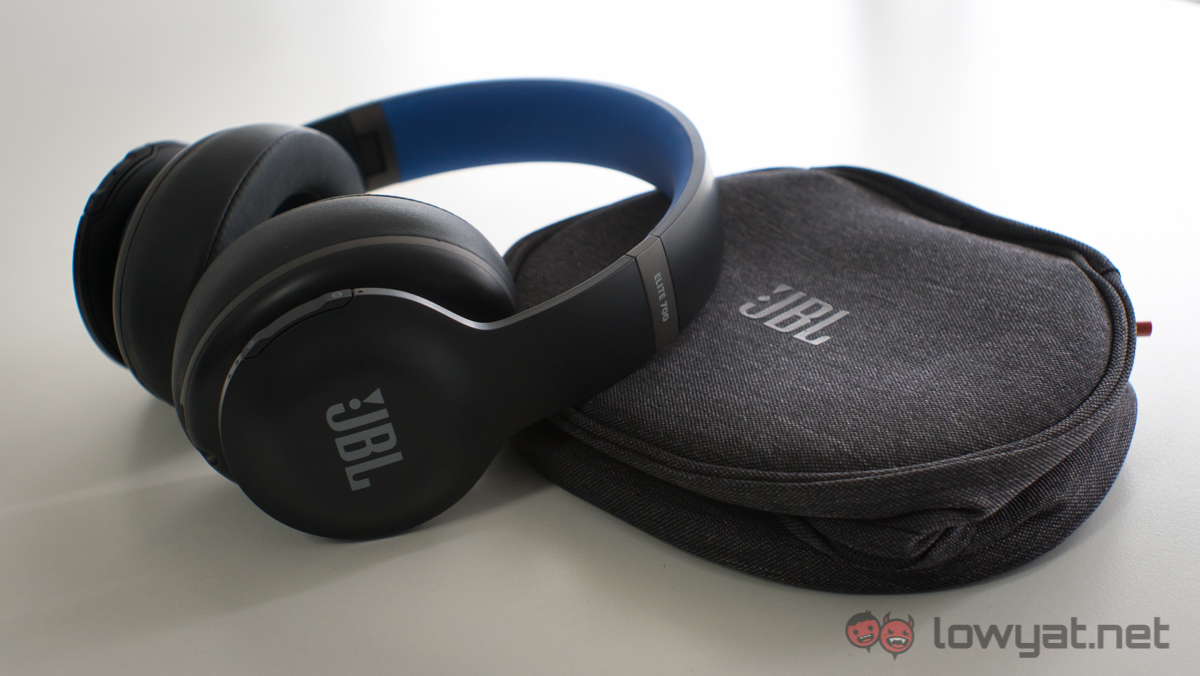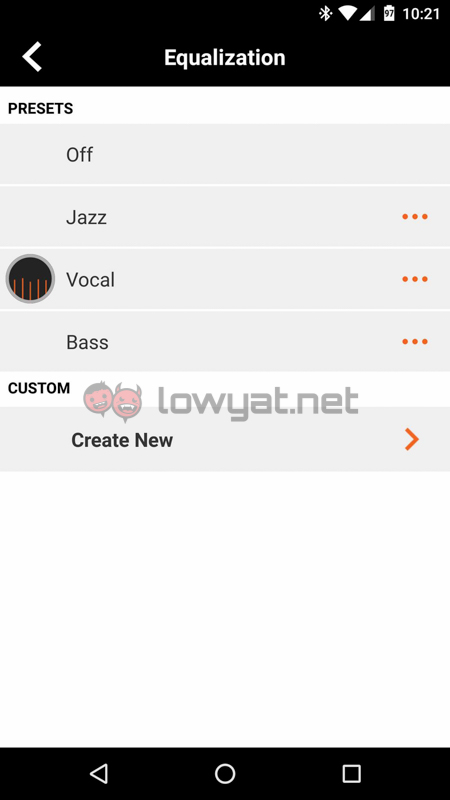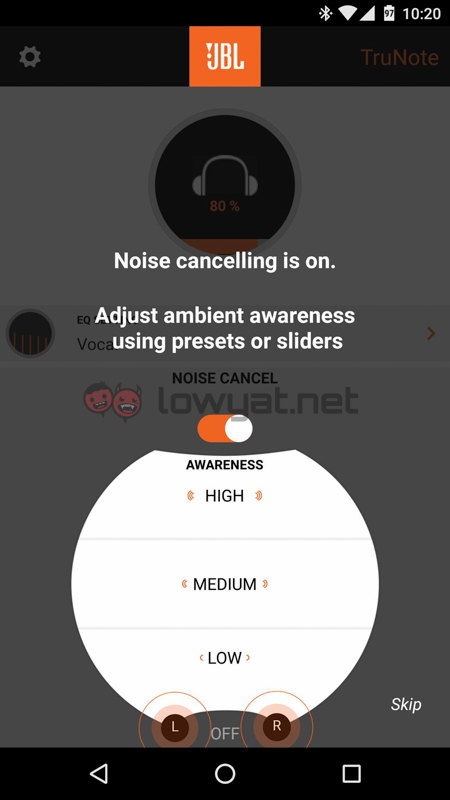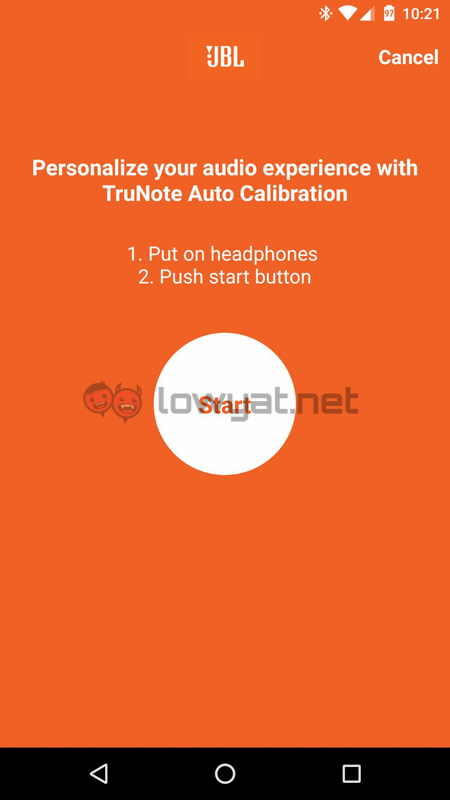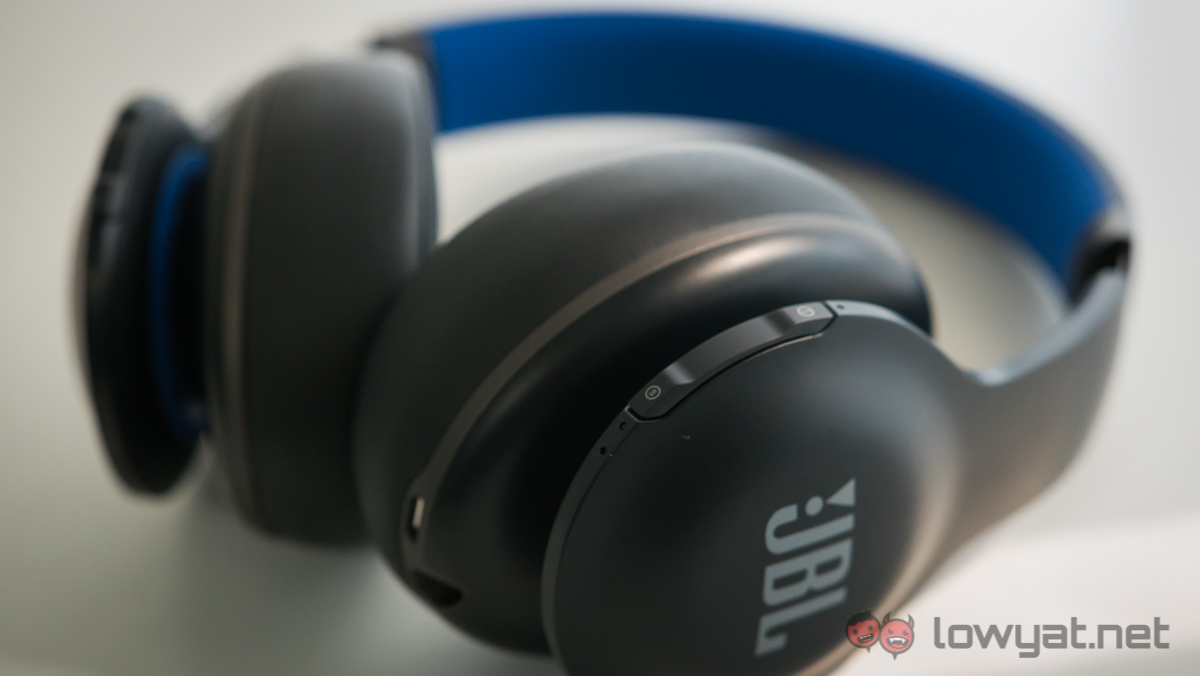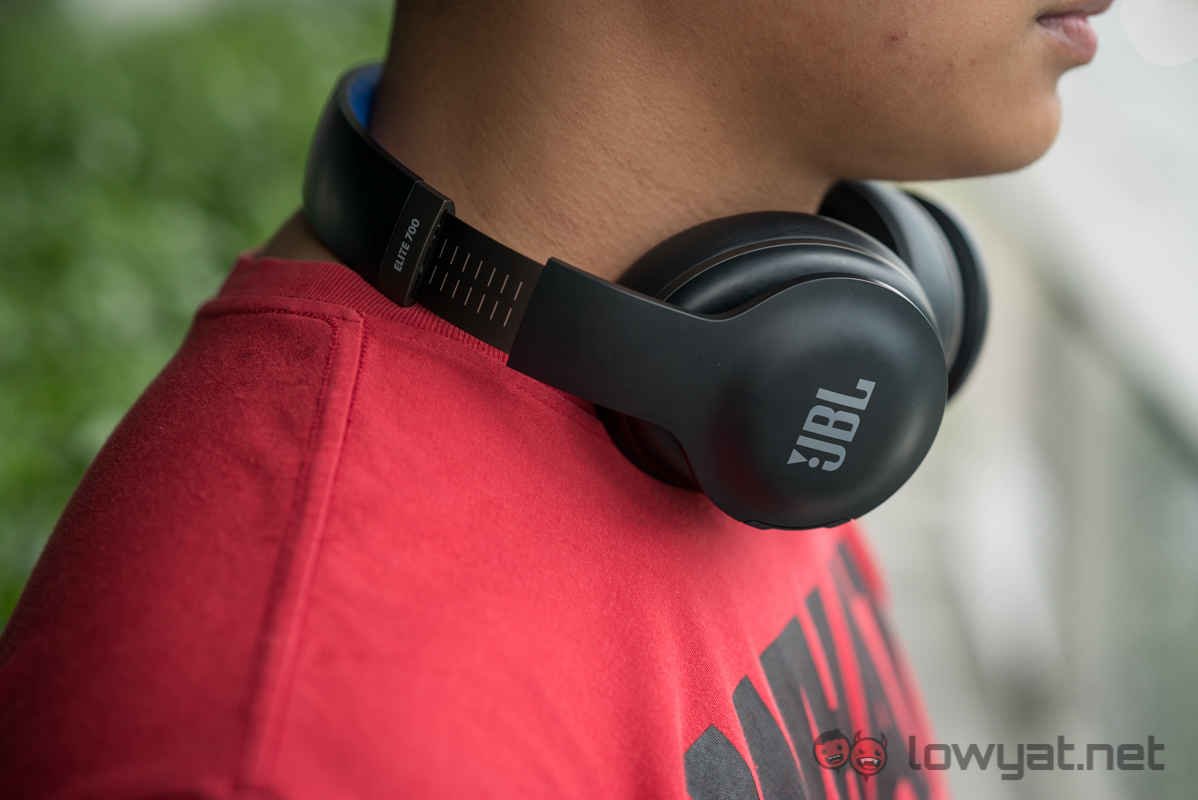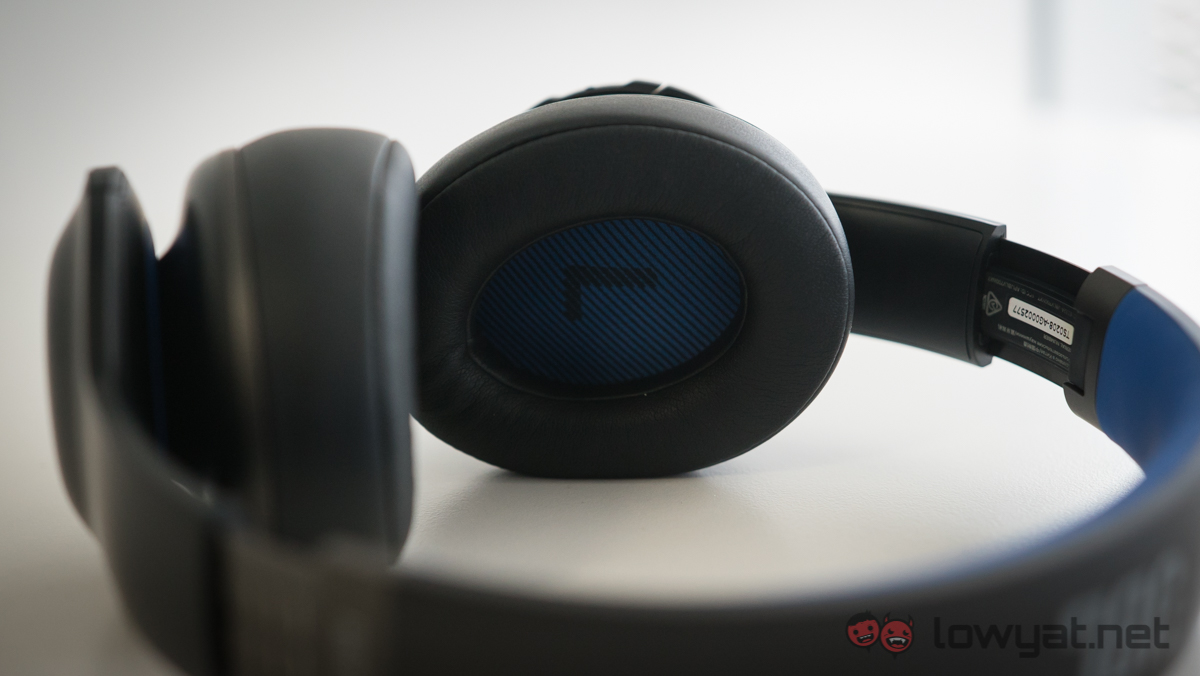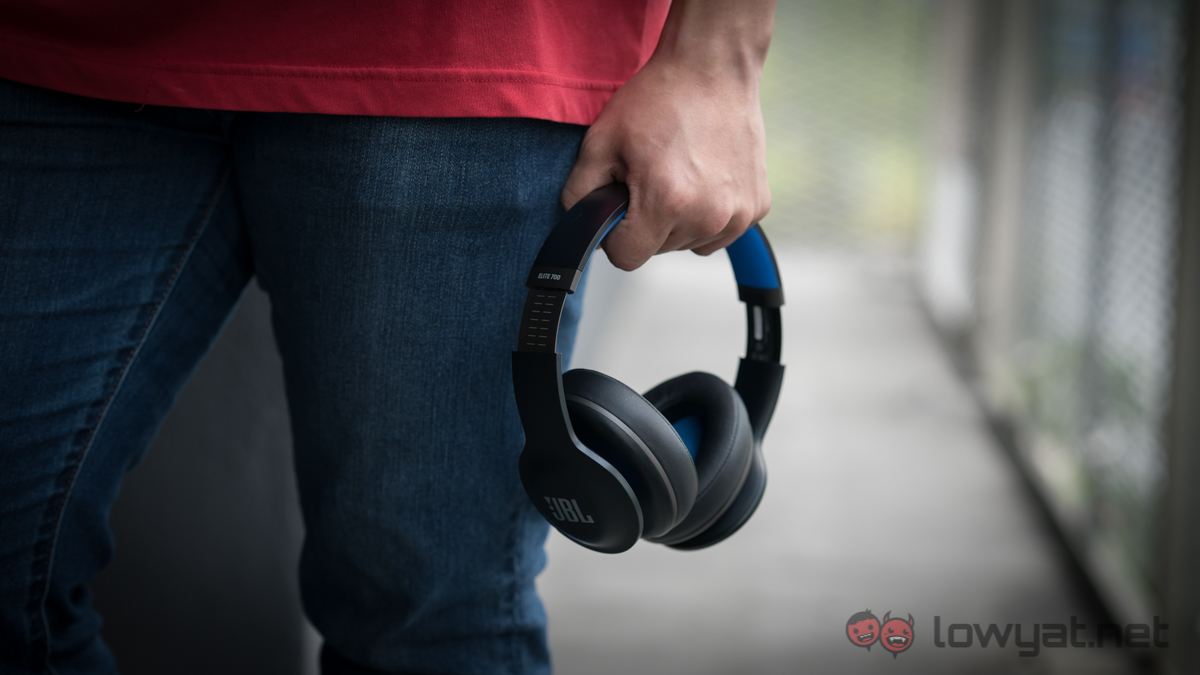Bluetooth, noise cancellation and EQ customization; these are just some of the features jam-packed into the device that is the JBL Everest Elite 700 headphones. Those features don’t come cheap though, with a RM1,499 price tag the Elite 700 dwells in the territory of a myriad of other mid-fi options. Let’s see if the JBL’s are worth shelling out money for.
Aesthetics
When I first unboxed the Elite 700 and saw the headphones for the first time, I knew immediately who they are targeted at. It shares a conspicuous resemblance to the Beats Studios (especially the 2.0 version), from the plastic build right down to the shape of the cups.
To be fair, JBL’s design is a tad more understated compared to the glossy plastic on the headphones it’s inspired by. The Elite 700 has a soft-touch, matte finishing which makes it sleek but prone to oil stains. The headphones also come in Black and White but my Blue review unit has blue accents around it to make it look a little less plain, although the design is still nothing to write home about.
Build Quality & Comfort
While being mostly comprised of plastic, the Elite 700 has some heft to it making it feel more premium in hand, or rather, on head. The build is also solid albeit a little stiff: The clamping force is rather strong and I had to adjust the headphones to nearly the maximum height before it felt comfortable on my head. The padding on the top band is thin but hardly noticeable when I’m wearing it. The thick ear pads while comfy made my ears steamy after a couple of hours of use, especially in the day with our heaty Malaysian weather.
The headphones, when not in use, can fold down to a slightly smaller form factor, allowing you to store it in the soft carrying case included in the box. The included cable is also thin without braiding or anything of the sort but you’d probably not be using it a lot, what with these being wireless headphones.
App and Features
The Elite 700 comes packed with a plethora of features and most of them can be controlled via the My JBL Headphones app that’s free to download on both the App Store and Google Play Store. From the app, you’re able to see how much battery is left in the Elite 700, adjust your sound signature through an EQ, control the amount of noise cancellation and make use of something called TruNote equalization.
Through the EQ setting, you’re able to tailor the sound of the Elite 700 to your needs and music. You can either choose from built-in presets like Jazz or Vocal, or create your own custom one just the way you want it. This is one setting that purists would probably keep away from though.
With Ambient Aware, you’re able to customize the amount of ambient noise you hear as the Active Noise Cancellation is active. I found the ambience allowed into the headphones to sound artificial, as though it was merely coming from the tiny microphones located around the headphones but it’s still a neat feature if you want to know what’s happening around you as you listen to your music.
Going through TruTone calibration is a simple process, as the headphones emit a ‘blip’ sound which according to JBL, measures the contours of your ears and adjusts the sound signature from the headphones accordingly. It sounds fancy for sure but I couldn’t really hear any major differences before and after the calibration.
On the headphones themselves, there are a couple of buttons for different controls like Play/Pause functionality, Track Skipping, Volume Control and also functions you can tweak from the app itself like TruTone and Ambient Aware. The buttons can also be used to answer, reject and switch calls.
I found the buttons to be a bit fiddly and while they were slightly raised accordingly, it would benefit more if it was textured to differentiate one button from the other. You know the included literature in the box that you normally toss out? Well, don’t toss the ones that come with the Elite 700. The quick start guide is essential before you’re used to all the buttons and what each of them do.
Bluetooth and Active Noise Cancellation
The Bluetooth 4.1 on the Elite 700 was quick and easy to connect to my phone and it sounded pretty much the same listening to it wired. I did however find that the headphones sounded much worse when the entire headphone is turned off even with the cable connected (more on that later). JBL claims that the headphones can last up to 15 hours with Bluetooth and Active Noise Cancellation enabled but your mileage may vary depending on your settings and listening volume. There is also an auto-off feature that deactivates the headphones after 10 minutes of inactivity in order to conserve battery.
As for the Active Noise Cancellation (ANC) Performance, I found it to be good but not great. Like most other ANC headphones an audible hiss is apparent, although it is much fainter here on the Elite 700. Where it trumps these other noise-cancelling headphones though is its ability to control the amount of ambient sound coming through from the previously mentioned Ambient Aware feature.
Sound Quality
First off, the Elite 700 sounds immensely different when it is not powered on from when it is. Most Active Noise Cancelling headphones have an internal amp to power both the ANC, the headphones itself and in the Elite 700’s case, the Bluetooth connection. Once turned off, the headphones sounded drained and unnatural. The overall sound signature becomes cold, leaning towards the brighter end of the spectrum. The bass is weak and barely audible; the mids thinny and hollow; the highs shrill, with everything sounded as though it was being played from an old record player – and not in a good way. But turn the power on and it sounds like a totally different headphone.
Now on to how it was meant to sound:
Bass
Judging from the Elite 700’s appearance, the bass was meant to be the highlight of these cans. Sure enough, the bass is plentiful and while it doesn’t bleed into the mids much, it still overpowers the other frequencies on certain hard-hitting tracks which in turn harms the definition of instruments.
The lean low end also gives the headphone an overall dark tonality. The cans possess quite a congested soundstage and are very closed-sounding. These characteristics make them quite fatiguing after longer listening sessions as well.
Mids
The mids of the Elite 700 actually rather clear on less bottom-heavy tracks. Vocals are warm and intimate but too close-knit to the instruments within the space. The ‘closed-in’ sound of the cans also leave vocals with lack of air, almost gasping for it even. The low-mids tend to sound slightly bloated as well, courtesy of the headphone’s low-end emphasis creeping its way up.
Highs
When not masked by the bass, the highs of the Elite 700 actually sound quite crisp although lacking a certain spark. The highs dip and roll off towards the end of the spectrum and pairing that with the overall darkness and warmth of the headphones, it leaves much to be desired in the ‘fun’ department. Songs tend to sound just ‘so’, lacking in both resolution and definition.
Conclusion
Overall, the Elite 700 sounds very much closed, dark and with plenty of warmth, although a little too much for my liking. The soundstage is narrow and instruments sound congested and lacking in spatial definition. They aren’t the most fun sounding set of cans either, but the bass alone might be enough to satisfy some. So they aren’t an audiophile’s choice for reference headphones, but is it all downhill from here? Not quite.
The Elite 700 was meant for more urban youth who are constantly on the go or just want to look hip with these hanging around their necks. Its long list of features and bass-oriented sound is more than enough to satisfy their needs. So, it’s a decent sounding headphone with a multitude of functionality but is that enough to justify the RM1,499 price tag? If you find that the included features match your needs, then sure. If not, you can probably do a whole lot better.
Follow us on Instagram, Facebook, Twitter or Telegram for more updates and breaking news.

